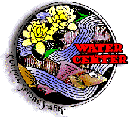
National Water Center, Eureka Springs, Arkansas

National Water Center, Eureka Springs, AR
Updated: April 2014 Contact: Contact: NWC
Contents ©1999-2014 by National Water Center. All rights reserved worldwide.
Springs Committee Asks for Master Plan Inclusion
by Mike Ellis, Lovely County Citizen April 19,2007
The Planning Commission held a workshop last Thursday to consider a proposed addition to the city's master plan.
A group representing the Springs Committee of the Parks Commission presented information about preserving the city's historic springs by protecting the "spring recharge areas."
Parks Director Bruce Levine gave a brief introduction of some geological terms. He discussed the various rock strata below this area.
He said dye tracing in 1981 identified more than 220 springs. Along with the well-known Basin Park, Grotto, or Magnetic springs, the list includes other springs with names like Break-a-Leg, Flat Tire Gulch, or Fido.
Large or small, the springs can be fed, or recharged, by surface waters or by deeper aquifers. Those recharged by surface waters present special problems, especially considering the geology of this area.
Sinkholes, springs, losing streams, and caves are features of the fractured limestone under this region. This type of land area is referred to as karst. Surface water flows quickly through karst and does not have much opportunity for filtering.
Springs are refilled by two water systems, separated by a layer of relatively impermeable shale. The springs recharged by surface waters have more problems with contamination, and many of those springs have also experienced reduced flow, for a variety of reasons.
Levine yielded the floor to committee member Susan Lourne, who showed maps of the city's springs. The maps showed where springs emerge, but also showed which areas recharge each spring.
The springs committee is calling for protection of critical spring recharge areas, with a view toward improving the quality and quantity of water discharged from historic springs.
The committee report gave this definition: "Critical Spring Recharge Areas are those land areas containing hydrologic and other physical conditions that facilitate spring recharge and/or the transmission of contaminants to historic spring outlets or public spring reservations."
The report further distinguished between Category I and Category II recharge areas. Category I areas "recharge springs with historic outlets in public parks and spring reservations." Other areas that might fall in "form a part of the overall environment necessary for the survival of identified botanical and other biological life forms."
The committee report suggested methods for protecting Critical Spring Recharge Areas, starting with education. The report also suggests regulation of development in these areas, conservation easements, and the public or private financing of projects "aimed at preserving and enhancing the volume and quality of water released at spring outlets."
Adding these provisions to the city's master plan may help in future grant applications. Levine said the city has been turned down on several applications, and this type of commitment by the city might have made a difference.
He said if Planning approved these guidelines, City Council would also have to approve them, since this would constitute a change to the master plan.
Lourne explained that adopting this document would "simply provide a policy statement upon which future decision-making can be based. It would preclude adoption of ordinances or resolutions contrary to those policies, but does not in and of itself constitute land use regulation. Regulation can only be achieved through ordinances actually implementing the plan."
The Planning Commission will place this topic on an upcoming agenda.
Lovely County Citizen, Page 4, April 18, 2007
